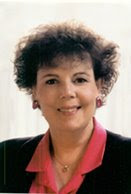Unfortunately, there is no single
system used to describe thread sizes.
One common size designation is
depicted as a fraction, such as 50/3. The first number reveals the thread's
weight and the second tells us the number of plies -- a 50/3 thread has a
weight of 50 and is made with 3 plies of yarn. With this system, thread weight
decreases as weight numbers increase. A 50/3 thread is commonly used for
piecing, but other equivalent sizes work just as well.
Sizing systems are complex, and
often inaccurate as threads that are imported and exported around the world are
re-labeled for a new country.
I think about thread as thin, normal and fat. The thinner the threas the smaller the eye of the needle needs to be. With a normal thread, I use my regular piecing needle. For fat thread, using a large needle with a large eye works very well. When in doubt, check the manufacturers web site!
I think about thread as thin, normal and fat. The thinner the threas the smaller the eye of the needle needs to be. With a normal thread, I use my regular piecing needle. For fat thread, using a large needle with a large eye works very well. When in doubt, check the manufacturers web site!
More Thread Terminology
Shopping for thread may introduce
you to new terms. A few words you might hear are:
Mercerized... Cotton thread is processed with
chemicals that give it more luster, improve strength and help it retain dyes.
The process also makes thread more fuzzy, which is reduced by putting it
through a gassing or singing process.
Crocking occurs when dye on the surface of
dry thread (or fabric) rubs off onto other materials.
Denier, a sizing method that's often used
for continuous filament threads. The number indicates the weight in grams of
9,000 meters of the thread.
The Myth
You can help avoid future wear at the seams by choosing a thread that's not stronger than the fabric, so avoid polyester threads and overly strong cotton threads. The theory being that if the thread is weaker than the fabric, repairs are easy. I agree with this theory when piecing my quilts.
HOWEVER all bets are of when it comes to quilting my quilt. I'll use any thread that I can get through a needle and if it won't fit through the eye, I'll wind it on the bobbin!










No comments:
Post a Comment